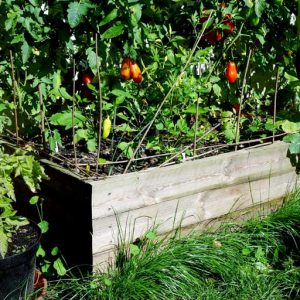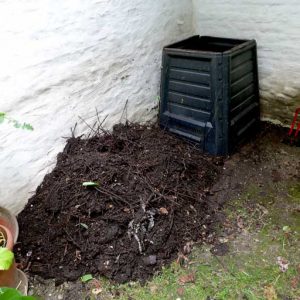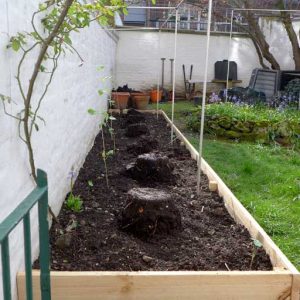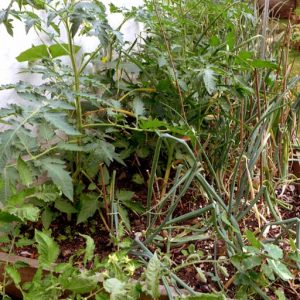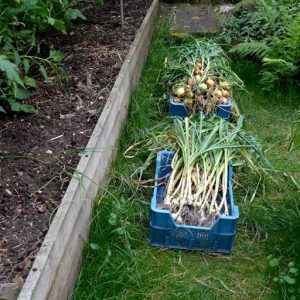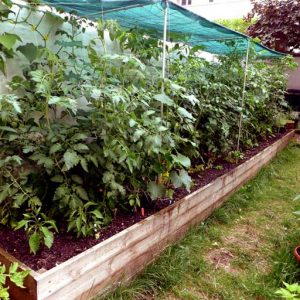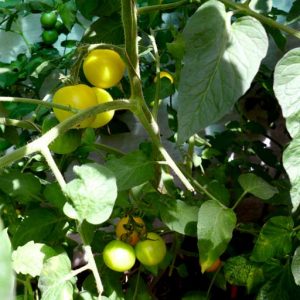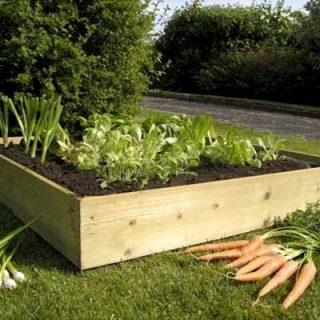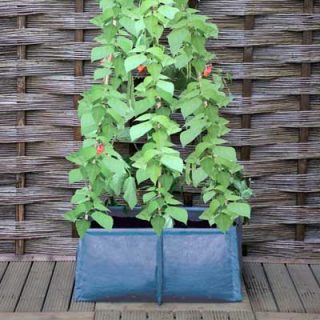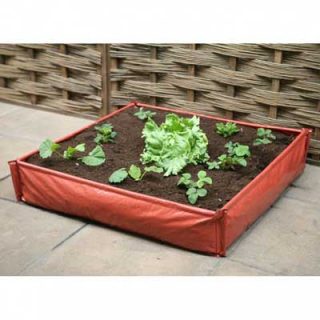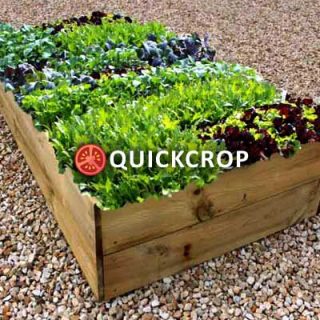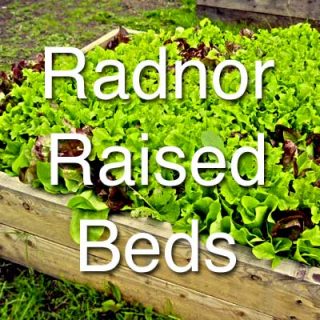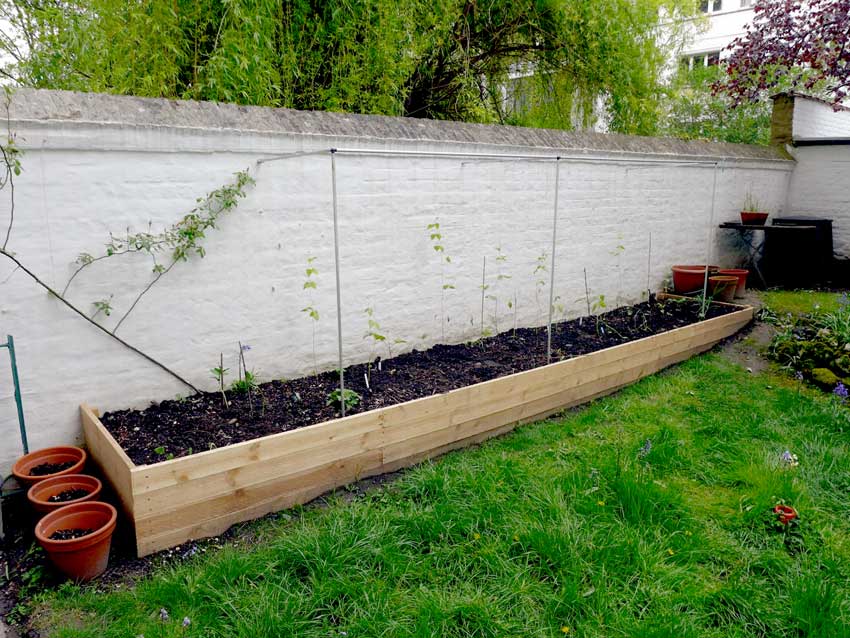
Space permitting, a raised bed is the best for growing vegetables. It should be an arm’s reach wide and as long as the space allows. It should be positioned to catch the best of the sun and ideally with a wall behind it. There are also temporary raised bed frames suitable for roofs and smaller spaces that can be packed up and removed after the year.
The main point of a raised bed is raised soil depth. The structure means the soil is less packed and better aerated (do not walk on raised beds). Compost is the key to a good raised bed. Home made compost means a full cubic metre is added each year, usually in the autumn. Compost is forked into the bed and left over winter to be rained in. Over a few years an excellent bed is created.
A simple planting plan can involve planting garlic and onions in November and December to over-winter. The main summer crop of tomatoes, cucumbers and beans is planted out around June and July, just when it is time to lift the onions and garlic, providing extra space. This is best achieved by leaving a back space empty for the tomatoes, garlic and onions to the front.
In this garden the raised bed is used mainly for a summer crop of tomatoes. These are planted along the back wall of the bed and trained on string to reach across the bed. The yellow tomatoes are generally the first to fruit followed by the reds. These will crop from August through to October. A few cucumbers are planted against the back wall and on support poles to the front.

Every garden is different. Light and shade and dampness will determine fruit setting. Generally the raised bed will be finished by the end of September, early October, depending upon weather. Then it will be cleared (everything composted), new compost applied and forked in, and the cycle of planting will start over again with the garlic and onions. Experimentation is everything.
